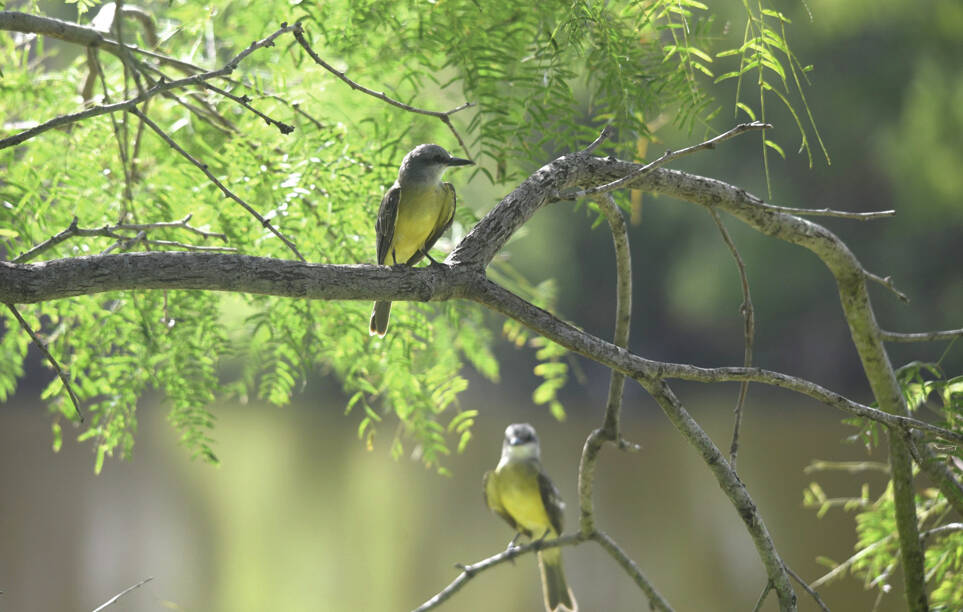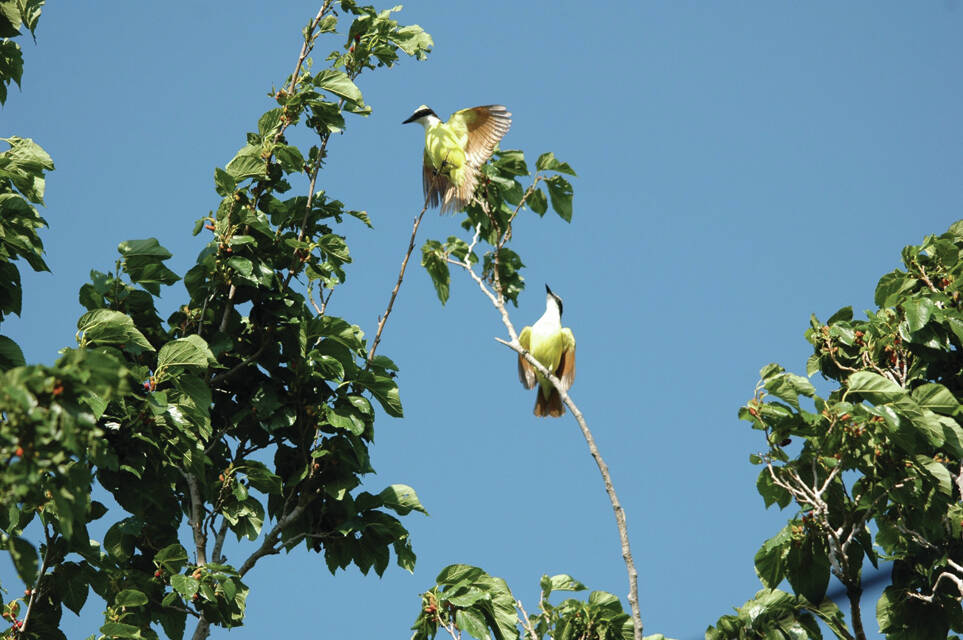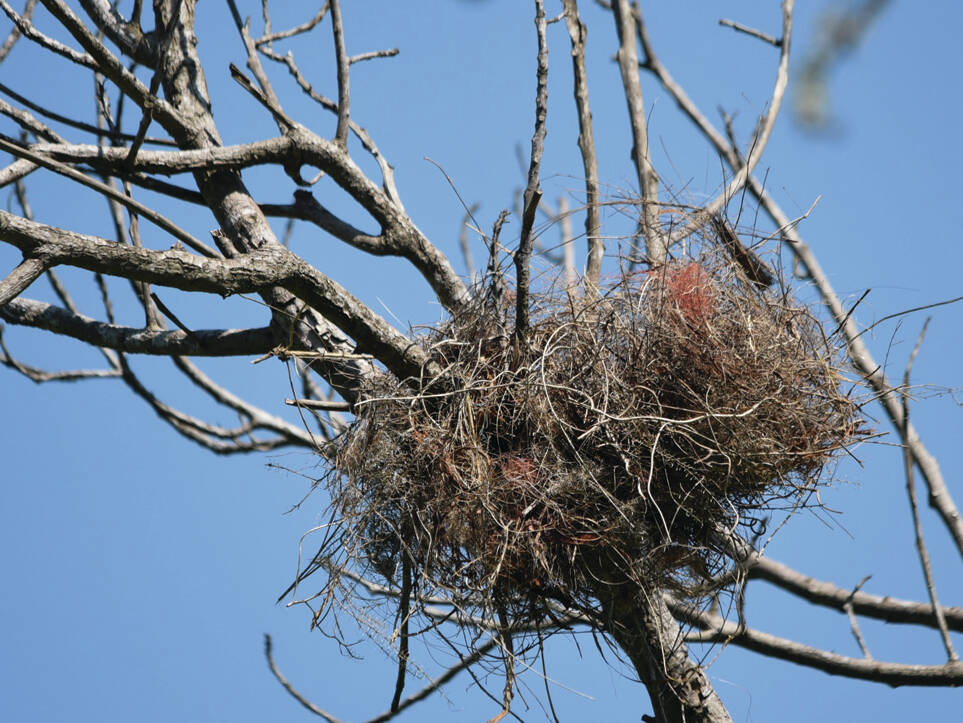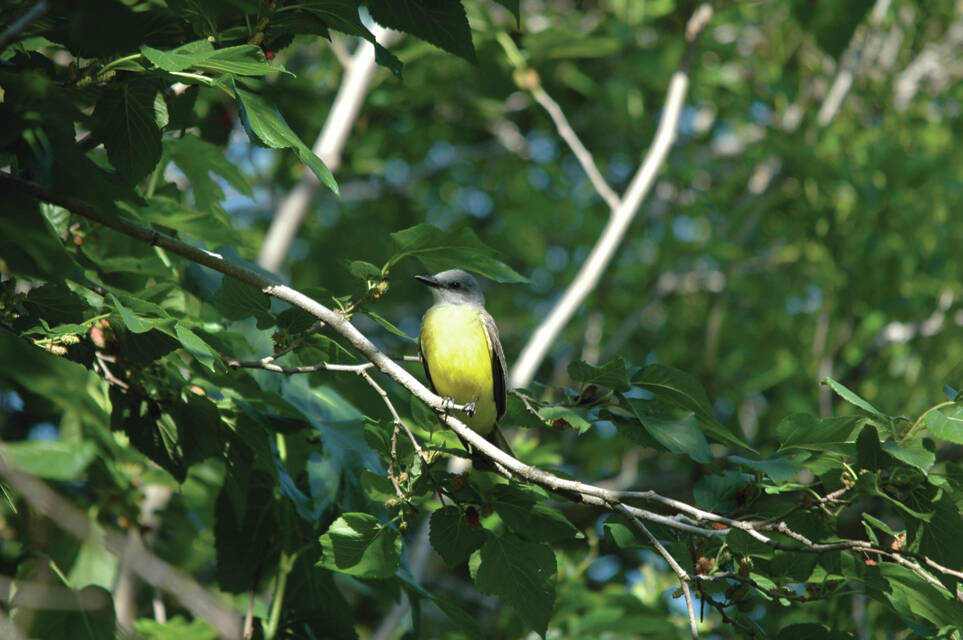|
Only have a minute? Listen instead
Getting your Trinity Audio player ready...
|
Our resident birds will soon be busy selecting sites and building nests, creating a variety of architectural styles to suit individual species’ needs, and using an assortment of natural materials.
Brown-crested flycatchers will be returning in early March from their wintering grounds in Mexico. Flycatchers are in the Tyrannidae family, a group of insect-eating birds.
In the thorn forests of the Rio Grande Valley, brown-crested flycatchers frequent large mesquite trees, sugar hackberry, ash, catclaw acacia and saltcedar. They seek out natural cavities or abandoned woodpecker holes and line them with materials like fur from rabbits, opossums, horses and cattle, shed snake skins, onion skins, plant fibers and other birds’ feathers. Nest location is from five to 30 feet above ground. Both sexes help build the nest.
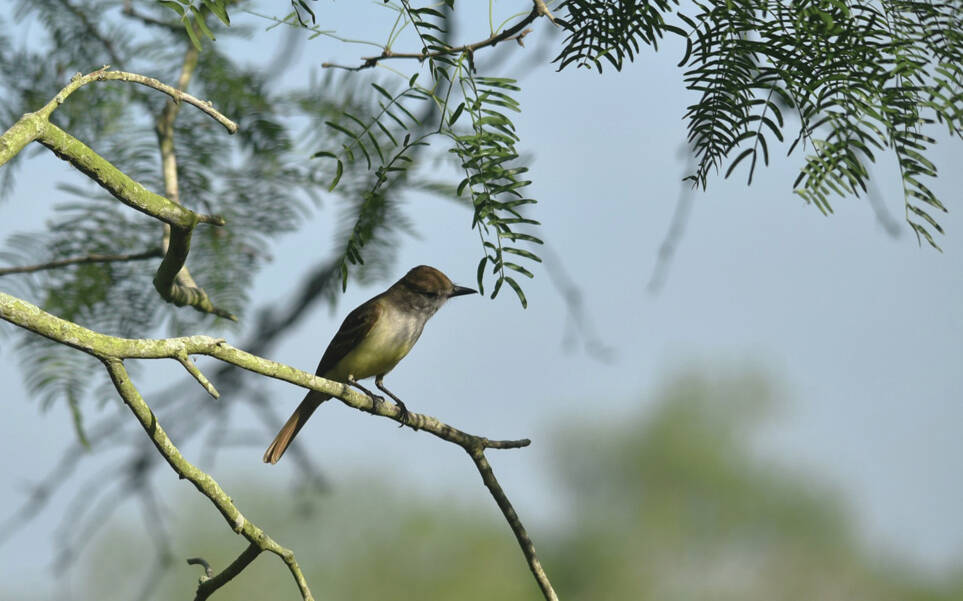
A cousin to brown-crested flycatchers is the great kiskadee. They also choose large trees like hackberries and Mexican ash. They build in forks of trees as high as 50 feet above the ground. Materials include grass, weeds, bark strips and Spanish moss and other plant fibers.
Two other South Texas Tyrannidae family flycatchers are tropical and Couch’s kingbirds.
Both tropical kingbird sexes select a nesting site, generally in a fork of a tree, and often 60 feet in the air. The female builds the nest. It is often described as bulky, shallow and sloppy looking, but gets the job done. Materials are vines, rootlets, twigs, weeds and grasses; it is left unlined.
Couch’s kingbird nests are built by the female, usually on a horizontal limb, eight to 25 feet above ground. They are rough cups of twigs, bark and roots, and lined with finer roots, Spanish moss and plant down.
The black-crested titmouse is not in the flycatcher family but is a favorite and entertaining permanent Rio Grande Valley resident. They eat insects, seeds and berries. The female builds the nest in a natural hole in a tree or woodpecker cavity, from three to 20 feet above ground. She will line the cavity with soft materials, like lichen, feathers, snakeskin, moss, grass, leaves and animal fur.

Birds don’t need our help building nests, but leaving some yard litter and debris while you are clearing up the garden after winter wouldn’t go amiss.
Some birds will pick through compost piles for suitable nest building materials. Consider gathering fallen twigs, sticks and leaves and leaving them in small bundles near your compost pile. Alternatively, put the bundles in a sheltered area of your garden.
Keep it natural. Many items are harmful and should not be used, such as dryer lint, yarn, string, pet fur and human hair, fabric scraps, plastic strips, aluminum foil and tinsel.
Other natural materials that are useful include small pieces of straw, strips of vines, moss, lichen, cattail fluff and other fluff or down from native plants that have gone to seed. Small native plants that have dried can be weeded out and tossed on a brush pile for the neighborhood birds. Grass clippings are useful if they are free of chemicals like fertilizer and pesticides. Leave feathers and snakeskins where you find them.
Anita Westervelt is a Texas Master Naturalist.
References useful in writing this story were Audubon.org, AllAboutBIrds.org, txtbba.tamu.edu/ and Alsop III, Fred J.2002, “Birds of Texas,” DK Smithsonian Handbooks, New York, and the national wildlife federation, nwf.org.

